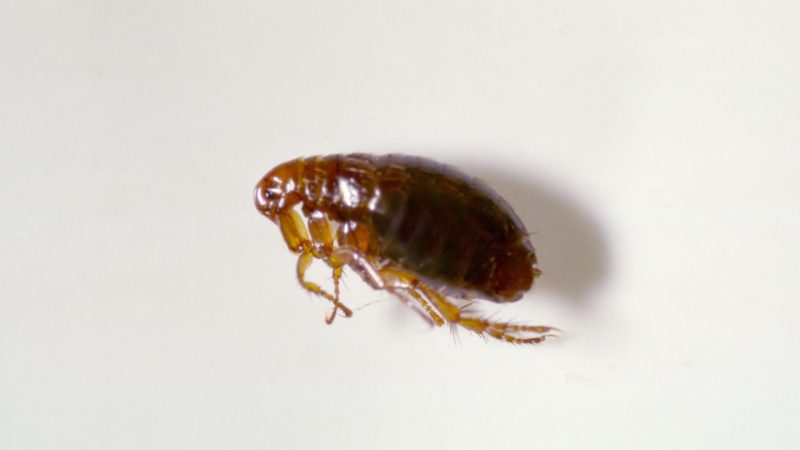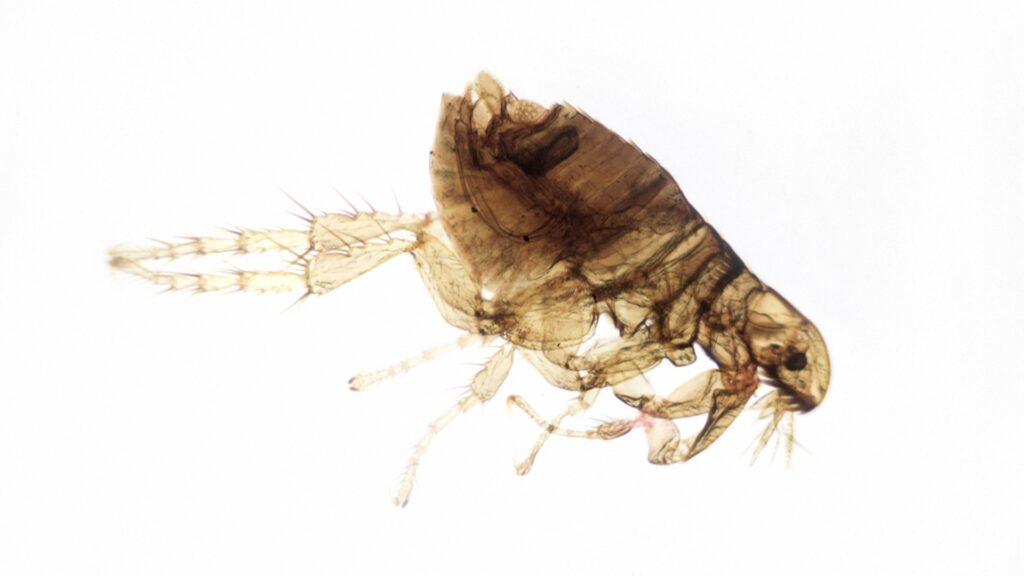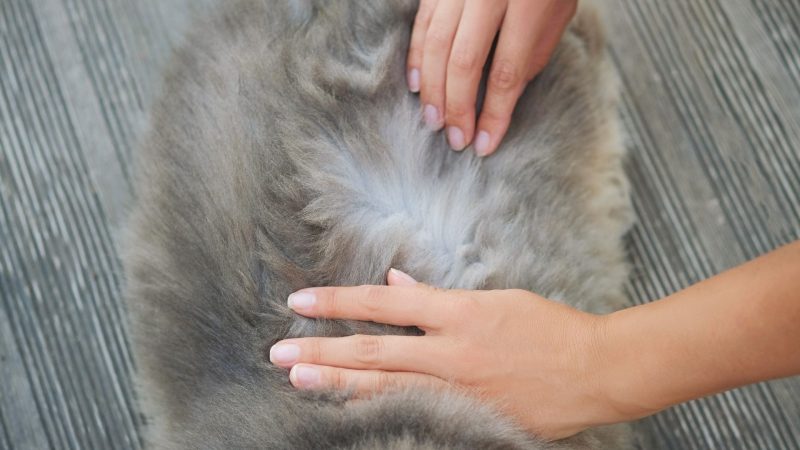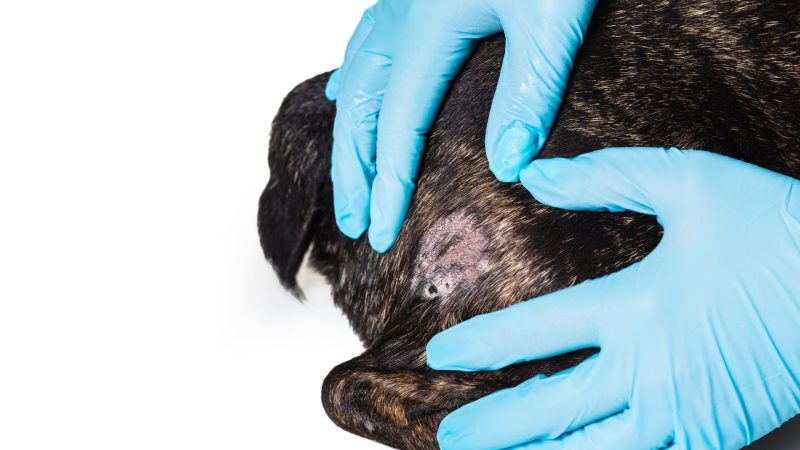If your cats or dogs are itchy and scratching excessively, there is a huge chance that fleas are attacking and biting them. Although these very tiny critters rarely attack humans, your fur-bearing pets may suffer a lot if you don’t get rid of them. But to do that, you should first know what fleas look like and how they behave.
Are fleas visible to the human eye? Fleas can be seen by the human eye. However, they are so small that a single flea can be very difficult to notice. This means that it can only be seen clearly using a microscope or a magnifying glass. Nevertheless, you can see them attached to the skin of dogs and cats.
Fleas suck blood on their hosts, mostly cats and dogs. But in general, they feed on almost any warm-blooded animal that comes near to them. This includes birds, skunks, rabbits, foxes, and rodents. These creepy bloodsuckers are not attracted to people. However, they also bite humans, mostly on the lower part of the body.
What Do Fleas Look Like to the Human Eye?

To the human eye, fleas are dark brown to black and have flat, oval bodies. These parasites don’t have wings, but they have six legs. Their hind legs are bigger and more powerful than their forelegs. This unique physical characteristic helps them to jump up to about 8 inches high and up to a distance of around 16 inches.
Fleas have a pair of short antennae that they use to sense heat, vibration, and changes in shadows and air currents. They are equipped with sharp, sucking mouthparts, which they use effectively in sucking blood. Although you may not see it clearly, their body is covered with stout spines that are facing backward.
The body of a flea has three parts – the head, the thorax, and the abdomen. But because of their very small size, it’s very unlikely that you see them clearly with your naked eyes. Nevertheless, their head is enclosed in a capsule. Their thorax has three unequal segments, while their abdomen has ten segments.
How Big Are Adult Fleas?

An adult flea can be about 1/12 to 1/8 in (2.1 to 3.175 mm) long. They are roughly as small as a grain of sand but smaller than ticks. On average, female fleas are about 3 mm long and are almost double the size of males. Their abdomens are also bigger and heavier than that of their male counterparts.
How Big Are Flea Pupae?
All flea species undergo complete metamorphosis. This means that their life cycle has four different stages – egg, larva, pupa, and adult stage. A flea pupa forms inside a cocoon, as spun by its larva. Flea pupae are a bit smaller than adult fleas. Under normal conditions, they will develop into adults in 1 – 2 weeks.
Is It Possible to Have Fleas and Not See Them?

It is possible to have fleas around, although you cannot see them. In fact, you will likely realize their presence only if there is already a flea infestation. Remember, they are very small and can easily hide under the thick fur of your pets. Not to mention, they can jump from one part of the animal to another part.
Aside from that, newly emerged adults are usually on the floor, hiding under the carpet, patiently just waiting for a host animal to go near them. Adult fleas may also be hopping into your curtains, furniture, or upholstery. Female fleas usually lay eggs on their host. However, your pet may shake the eggs off to the floor.
How to Spot the Signs of Fleas?

Fleas are very small, and you may find it hard to see them. However, it does not mean you cannot find them. Just like other pest insects, these thirsty blood-sucking pests show signs that they are present or before they leave. But then, you have to be a keen observer to notice these signs. Here are some of them:
- You can see fleas on your pet. This is the most obvious sign of fleas. As mentioned earlier, fleas are more attracted to animals than to humans. If your pet is scratching most of the time, it’s very likely due to flea bites.
- You may see flea eggs on the floor. Female fleas lay eggs on their host’s fur and can lay about 27 white, oval eggs a day. However, these eggs will fall on the floor. They may also be in places where your pets spend most of their time.
- Flea larvae could be present too. They are white or pinkish-white, about 3/16 in long, and look like tapeworms. It takes about 3 – 4 weeks before larvae become pupae. Nevertheless, they don’t bite and pose no health risks.
- You may also see flea droppings. Also called “flea dirt,” adult flea feces are usually dark or reddish-black and look like dry black pepper. They can be seen under their beddings, the coat of your pet, and even under your carpet.
How Do I Know if My Dog Has Fleas?

Aside from the signs mentioned above, your pet will show you clues that fleas are attacking it. This is because fleas live in dogs (and cats), even if your pet dog is inside your house most of the time and rarely goes outside. Here are some of the important visual signs that will tell you that your dog has fleas:
- Your dog is scratching more than usual. Flea bites are painful and very itchy. So, if fleas are biting your dog, your pet will be irritated and could not help but scratch and bite its skin from time to time.
- Your pet dog is losing fur. Contrary to popular belief, fleas don’t pull the fur of their host animals. Instead, these mammals bite their irritated skin so hard, which causes hair loss. Check if your dog is losing some hair.
- You will see some flea bites. If your dog has small, raised red dots on its skin, fleas are very likely to be the culprit. Among the favorite areas of fleas to bite are the neck, ribs, shoulder blades, tail, groin, and back of the legs.
- Your dogs are sleepy. Just like bed bugs, fleas are mostly nocturnal. This means they are most active at night and will sleep during the day. Therefore, an infested dog will look sleepy as it lacks sleep at night.
- Your dog is in distress, especially during summer. Fleas are active all year round but are most active during hotter months or between June and August. They may not survive in the winter, but they can always go indoors to keep warm.
- Your dog has scabs. Your dog can develop some crusty scabs if it has parasites such as fleas, mites, or ticks on its skin. This is the effect when your pet is scratching its skin very often.
- Your dog has pale gums. This can be due to blood loss when fleas attack them. This is because fleas can suck blood about 15 times their body weight. This sign can lead to anemia and is common in puppies and kittens.
- Your dog has tapeworms. Most fleas have tapeworms, which can be very likely ingested by dogs. This usually occurs when your dog swallows infected fleas while they are biting their skin.
- Your dog has flea allergy dermatitis. This skin disease usually happens to dogs that are allergic to flea saliva. Among its symptoms include being restless and uncomfortable.
How to Tell a Flea From Other Insects?
Fleas may look similar to other blood-sucking insects because of their appearance. However, they have some unique characteristics, especially when compared to bed bugs, ticks, and lice. Here are some of them:
1. Fleas Rarely Bite Humans
Fleas also bite humans. However, it’s very seldom, and they may only attack people if they cannot find an animal host. This is because humans lack hair as compared to animals. Therefore, fleas find it difficult to reproduce in human hair.
2. Flea Larvae Don’t Suck Blood
Unlike the larvae of lice, ticks, and bed bugs that need to suck blood before they can be adults, flea larvae are not parasites. They first need to become pupae before going to the adult stage. Therefore, they don’t need to suck blood for them to grow.
3. Fleas Carry Diseases
Bed bugs, ticks, and lice don’t carry diseases. On the other hand, flea bites carry and transmit some diseases, particularly plague and flea-borne typhus (murine typhus fever). Fleas get these diseases from biting infected animals such as rats.
What Do Flea Bites Look Like on Humans?
First of all, fleas usually bite people on the waist, legs, and ankles, but seldom on the upper body. Flea bites on humans are very different from other insect bites. Unlike mosquito bites with two marks, they look like small, red spots with a light color at the center where the needle of the flea mouthparts entered.
Flea bites don’t swell like other insect bites. However, they might bleed for a while if you scratch them. Interestingly, not all people that fleas have bitten have the same reaction. In fact, some people are not prone to flea bites or will not show any sign that fleas bit them. But again, flea bites can infect humans.
Related: What Do Fleas and Flea Eggs Look Like? | Identification and Control Guide
List of Sources
Potter, M. (2018). Flea Control and Prevention. University of Kentucky.
Hahn, J., Liesch, P. (2020). Fleas. University of Minnesota.
Jones, F., Houseman, R. (2014). Fleas. University of Missouri.
Fox, R. (2006). Invertebrate Anatomy Online – Ctenocephalides: Cat and Dog Fleas. Lander University.
Shetlar, D., Andon, J. (2012). Fleas. Ohio State University.
- How to Get Rid of Copperheads | Practical Guide - August 27, 2023
- How to Get Rid of Corn Snakes | What Makes Them Aggressive? - August 27, 2023
- How to Get Rid of Alligators | Safety Measures and Removal Methods - July 16, 2023
